It's understandable that companies might be more risk-adverse these days. Nobody blames Capcom for focusing on Resident Evil and Street Fighter, but I've always held a fondness for that period when the developer was more experimental and gave us games like Okami and Viewtiful Joe. That is why Kunitsu-Gami: Path of the Goddess is such a surprising delight. It's a callback to that era, and it manages to stand very well on its own merits.
Kunitsu-Gami is set on the mountain of Kafuku. The mountain is the source of defilement, a corruption that seeps across the land and allows for terrible beasts called Seethe to escape and torment humanity. The only hope to stop them is a maiden named Yoshiro and her ritual dances, which can purify the defilement and save the land. Yoshiro must venture down the mountain and free the people corrupted by the Seethe, and she is aided by her loyal spirit companion, Soh, who the player can control.
Kunitsu-Gami's basic gameplay can best be described as a combination of tower defense, RTS and beat-'em-up. The premise is simple enough: As Soh, you must protect Yoshiro as she moves between Torii gates. The game is divided into day and night segments, swapping between the two as time progresses, and victory is achieved once you've guided Yoshiro to one of the defiled Torii gates and allowed her to purify it, freeing the village from its corruption.
During the day, you spend your time prepping. Exploring the villages allows you to find and purge defilement, and that in turn gives you valuable crystals, villagers who you can assign to tasks, and special equippable items. At the same time, the villages and areas also contain a number of potentially useful tools that you can repair, such as barriers, areas that power up your allies, or potential weapons. However, to make these combat-ready takes time, and time is the primary resource you need to worry about. You have a limited amount of daylight before night falls, and once it does, you're stuck with whatever you've gathered during the day.
Crystals you collect can be used to assign villagers to various jobs, which range from a simple woodcutter to a sumo wrestler and more. These jobs all have distinct and valuable uses, with more powerful jobs requiring specific types of villagers and much heavier investments of crystals to use. You can change villages to other jobs at any time, but doing so has a cost to crystals.
Crystals have another use. You need to use them to carve a spirit path for Yoshiro, so she can move through defiled areas. Yoshiro dances (rather slowly) along this path during the daytime and can only move as far as you've carved out. The further you carve, the fewer resources you have to otherwise build up your villagers. Thus, it's important to balance how far you carve the path versus how much you spend on soldiers. You can rarely reach the end of an area in a single day, so the key is figuring out what position is most defensible.
Once night falls, Kunitsu-Gami becomes a tower defense game. Yoshiro is forced to remain wherever she is, and she's protected by a barrier. The Seethe will start to pour out of the defiled gates, and you have to position various villagers to stop them or slow them down. As you can imagine, each different villager type has advantages and disadvantages. Archers have a long distance and are great against flying enemies, while Woodcutters smash things up close. Sumo wrestlers draw attention, while thieves are cowardly and will hide but can find special items during the day. As the game progresses, you get more and more esoteric types and need to learn to use them.
This is very important because there are also many types of the Seethe. The weakest types merely swarm toward Yoshiro and can be taken down by a woodcutter. More powerful types appear, such as enemies that buff other enemies, enemies that fly or teleport, or otherwise subvert your defenses. Some are just heavy hitters and require a serious investment to stop. Mixing and matching your various classes is critical to success. Each class can also be upgraded by spending a special resource.
You do have one heck of a trump card. Soh can be directly controlled and plays like an action game protagonist with various combos, unlockable abilities, and special attacks. Going into combat as Soh allows you to take the fights directly to enemies, and Soh is generally more than capable of wiping out huge swarms of enemies on their own. In the early parts of the game, it is easy to imagine not needing the villagers' help, but as things grow more complex, balancing Soh and the villagers becomes more necessary.
It's a genuinely compelling bit of gameplay, reminding me of an old favorite Genesis title called Herzog Zwei. You have one extremely powerful unit that forms the vanguard of your defenses but are facing so many enemies that it's necessary to learn when and where to trust in your weaker allies. The game is very good about constantly tossing new and unusual twists at you. Some stages may require you to keep lanterns lit or deal with sudden ambushes or twisting terrains that require you to stay on guard. Indeed, it feels like almost every stage introduces something new, whether it's a new enemy type, new tool, or new ally. Once you've finished a stage, you even can rechallenge it with optional objectives, which unlock new items and further ways to power up Soh and the villagers.
There are also boss fights, which are mostly fun, but when they falter, they're the lowest part of the game. Trying to work boss fights into the game's hybrid gameplay system is sometimes a huge success and sometimes not. One boss fight has Soh permanently forced into spirit form, so you must rely entirely on villagers, which feels like a great way to twist the formula. Another is an awesome brawl where you block, dodge and parry like a character action game, with your fellow villagers providing support. Other boss fights don't feel very good. For example, an early fight against a centipede-like yokai fell flat. The weaknesses in the game mechanics came to light, and I rarely felt like I was fighting it correctly.
In between stages, you're able to revisit liberated villages and assign the people you've rescued to repair parts of the village. These repairs occur only after you've completed one or more stages, which gives you another reason to re-attempt previously defeated levels with new challenges, and in exchange, you get more power-ups and new items, and you can increase Soh's carrying capacity. There isn't a whole ton to the in-between segments, but there's an undeniably satisfaction in returning to a village that started as a defiled hellhole and see it return to its natural beauty.
I found Kunitsu-Gami's core gameplay to be simple but extremely fun. It's a basic concept but very compelling and executed extremely well. The simple loop of freeing villagers, powering them up, and gradually taking land back from the Seethe is genuinely compelling, and it was very easy to want to do just one more stage or spend a bit more time redoing levels to try to perfect them. It isn't the longest game in the world, but there's a fair amount of content, including special New Game+ challenges for special rewards.
One area where Kunitsu-Gami excels above anything else is the visuals. It is an absolutely gorgeous game. The art design is phenomenal on everything from the various monsters to the environments and the general style. Indeed, the entire game looks almost like it is being portrayed by puppets and models in a very intentional way that gives it an absolutely striking look. I frequently found myself taken aback by how amazing some of the environments were and how incredibly grody some of the Seethe looked. The strong music and audio help as well. The game has very little voice acting, as it depends on pantomime and music to carry its tone, and it does so masterfully.
Kunitsu-Gami: Path of the Goddess is a delightful surprise from Capcom. It's not a big-budget blockbuster or the obvious start to a franchise, but this unusual stand-alone game really feels like something creative and special. The core gameplay loop is plenty of fun, and the graphics are a testament to strong art design. Indeed, the only real complaints I can find are a few lackluster boss fights. It's a game that hearkens back to the days of titles like Okami — and not just in visual appearance. Kunitsu-Gami is absolutely worth a look if you're a fan of Capcom's unconventional titles.
Score: 9.0/10
More articles about Kunitsu-Gami: Path Of The Goddess






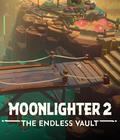
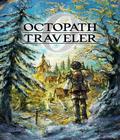
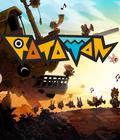
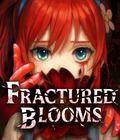

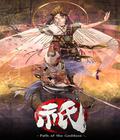 Kunitsu-Gami: Path of the Goddess is an Action/Strategy game where you fend off foul creatures and lead the Spirit Stone Maiden on her path.
Kunitsu-Gami: Path of the Goddess is an Action/Strategy game where you fend off foul creatures and lead the Spirit Stone Maiden on her path.




























